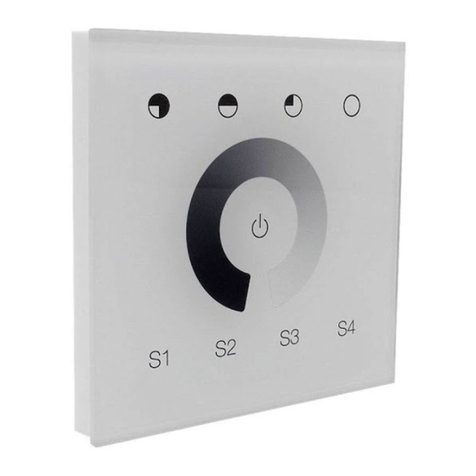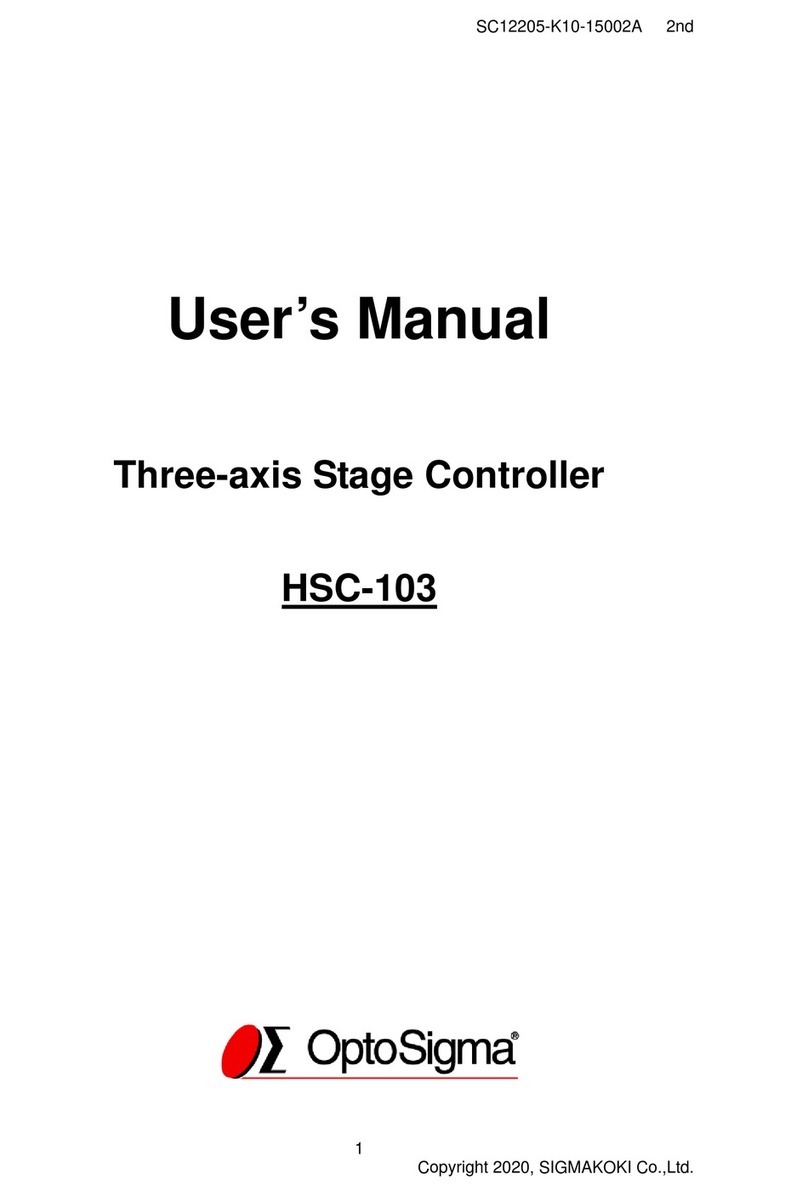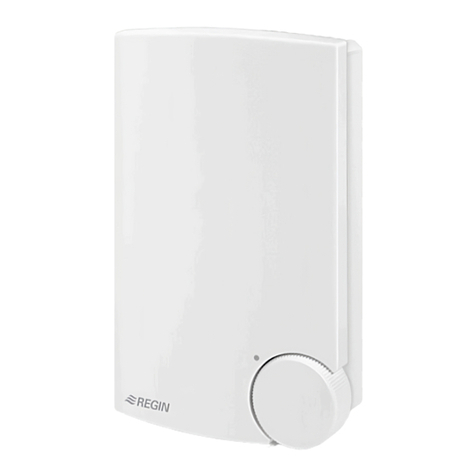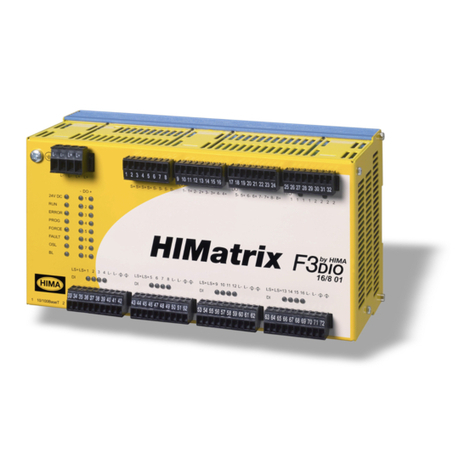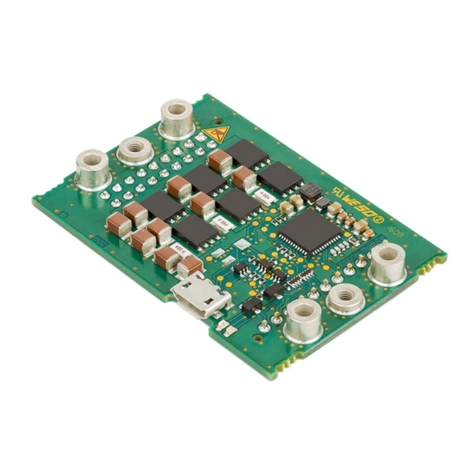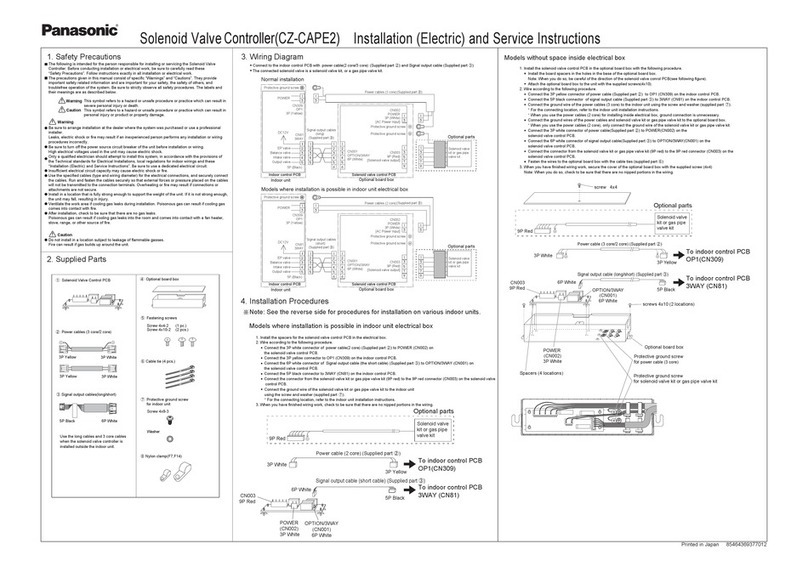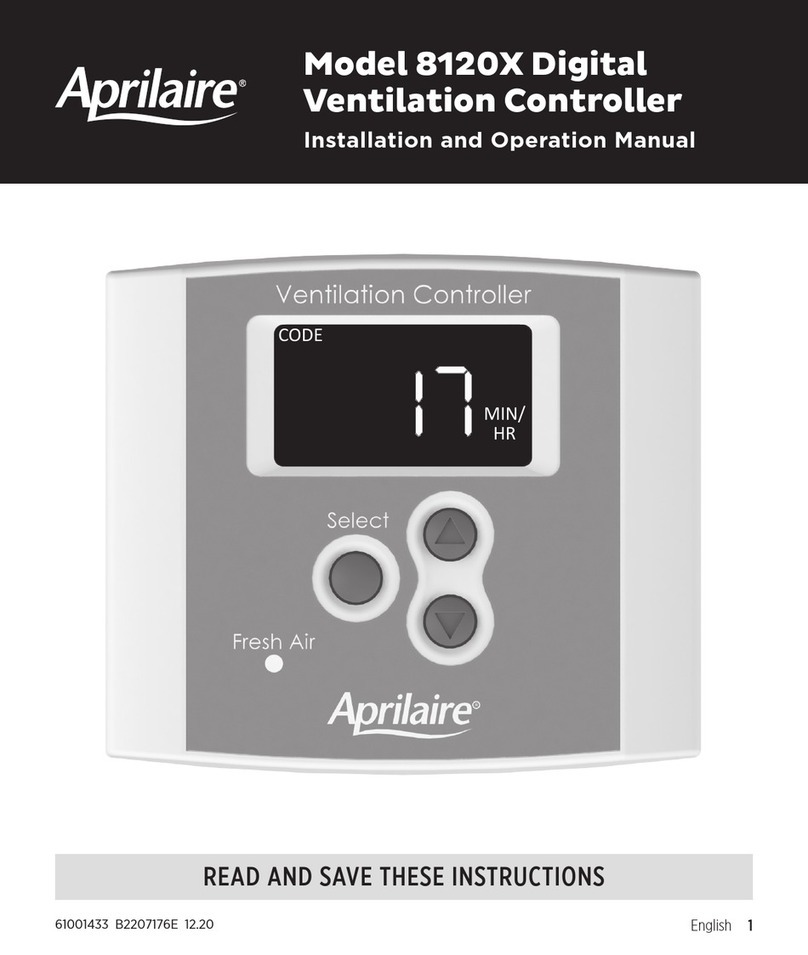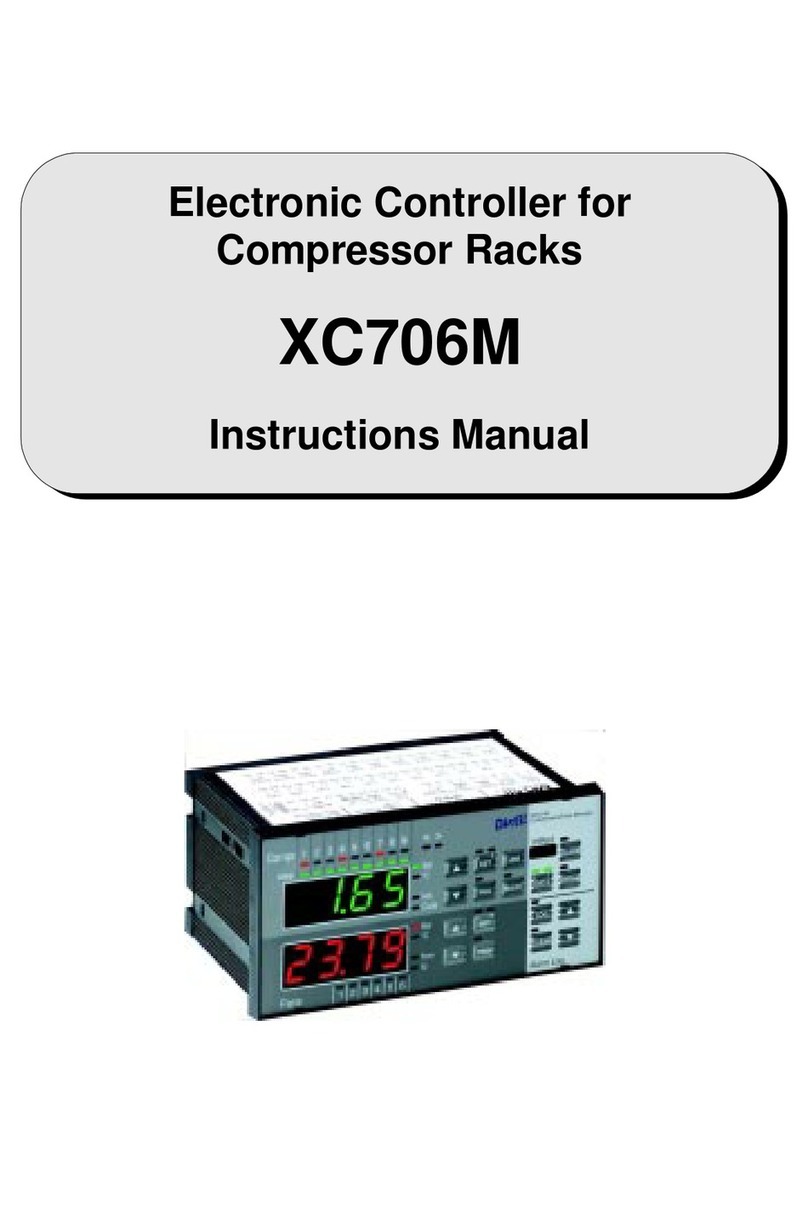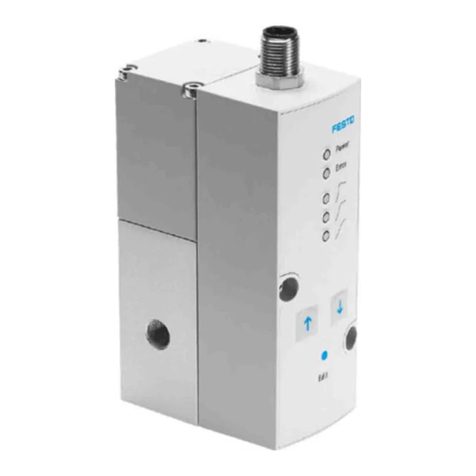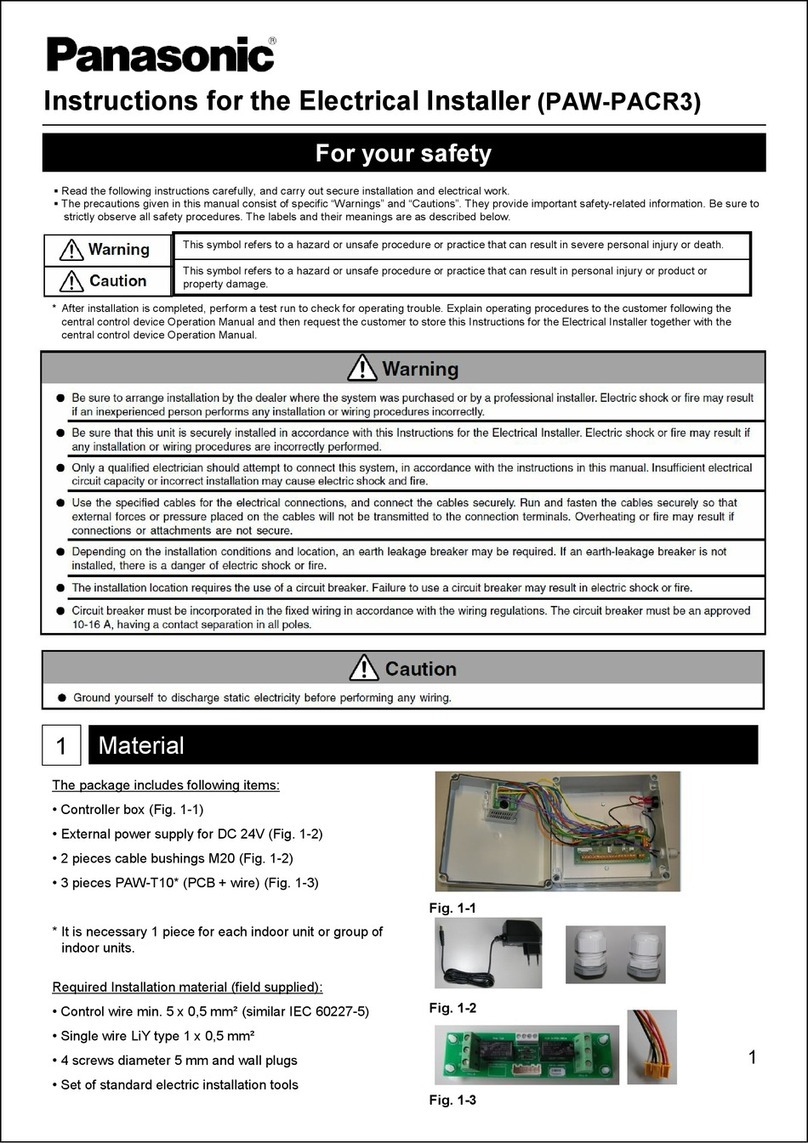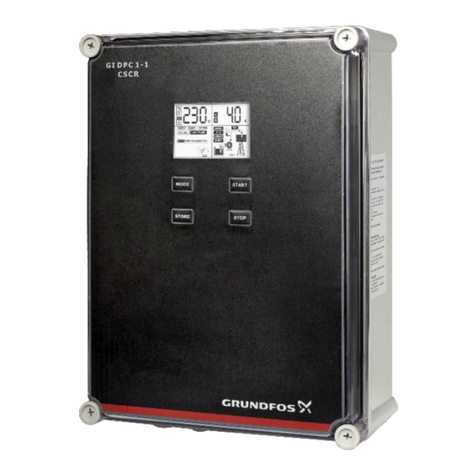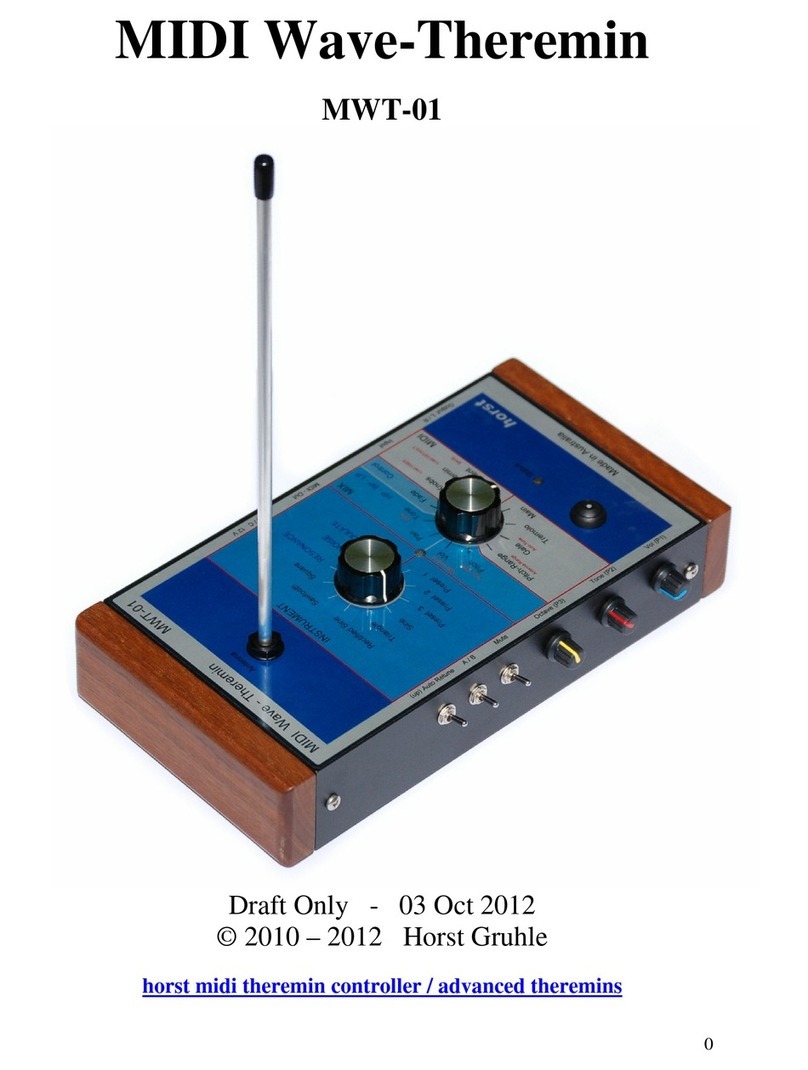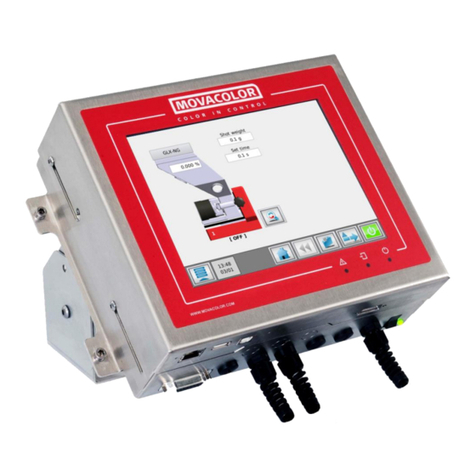Esse-ti HELPY User manual

05/04/2019
Alarm system for elevators
compliant with the European Standard
EN 81-28:2018
HELPY CONTROLLER
QUICK GUIDE

Page 2 DESCRIPTION
DESCRIPTION
Autodialer specifically designed for installation on elevator controller.
A Connectors for optional PSTN-line board
B LEDs
C Reset pushbutton
D Micro USB A/B port for PC connection
E Serial port for PC connection
F RJ45 connector for GSM Satellite
G Terminal blocks
H Connector for machine room speaker unit
I 12 V backup battery connector

TERMINAL BLOCKS Page 3
TERMINAL BLOCKS
+ 12 V In Power supply input 12 Vdc
- Negative
+ 12 V Out 12 Vdc output (max. 400 mA)
- Negative
TEL Local telephone
TEL Local telephone
BUS+ Bus for connecting 2W speaker units
BUS- Bus for connecting 2W speaker units
C Common terminal(1) for input IN1
IN1 Filter input(2) / Reset input(2)
- Negative
(1) : can be connected to a block –, to the block +12 V Out or to an external reference
(2) : allows to connect voltage free contact (NO or NC) or powered contacts
Optional PSTN-line board
LTI PSTN-line or universal GSM gateway input
Ground terminal
LED
HELPY CONTROLLER
RED LED signalling device status
GREEN LED signalling GSM Satellite signal strength
WHITE LED signalling data transmission
YELLOW LED signalling alarm / periodical test call
BLU LED signalling power supply status
GSM SATELLITE
RED LED signalling GSM status
GREEN LED signalling GSM signal strength

Page 4 CONNECTING THE TELEPHONE LINE
CONNECTING THE TELEPHONE LINE
The alarm system is ready for connection over the GSM line by the proprietary
GSM Satellite. It allows the connection of a PSTN line or an universal GSM
gateway with the optional PSTN-line board.
GSM Satellite
Installing the antenna and inserting the GSM SIM card in the
GSM satellite
Before proceeding, make sure the device is off and use all due precaution to
avoid electrostatic discharge.
Remove the GSM satellite cover.
Screw the antenna in the appropriate connector (take care to only rotate
the metal ferrule to fix the antenna; do not rotate the antenna on itself).
Push the SIM Card housing cover as indicated by the arrow OPEN until it
unlocks and lift it.
Carefully slide the SIM Card into its housing cover.
Lower the SIM Card housing cover and push it as indicated by the arrow
LOCK until it locks in place.
Close the GSM satellite cover.
ATTENTION
A GSM SIM card is required.
Do not use 3G/UMTS or 4G/LTE SIM cards.
ATTENTION
It is not required to remove the PIN code prior to
the use of the Helpy Controller.
The PIN code can be entered, if necessary, by
setting parameter 282.
ATTENTION
In order to avoid damage, never power up the
device without having first installed the antenna.

CONNECTING THE TELEPHONE LINE Page 5
Connecting the GSM satellite
Connect the RJ45 connector of the GSM satellite to the RJ45 connector
of the Helpy Controller by means of the supplied cable.
PSTN line or universal GSM gateway
Insert the optional PSTN-line board in the dedicated connectors (A in the
picture at page 2)
Connect the ground terminal (indicated by ), to a ground socket in
order to increase the telephone line protection.
Connect the PSTN line or the universal GSM gateway to terminal LTI.

Page 6 CONNECTING THE SPEAKER UNITS
CONNECTING THE SPEAKER UNITS
It is possible to connect to the Helpy Controller up to 16 independent 2W
speaker units by means of the 2-wire bus (4 units with direct power supply
from the bus and 12 with separate power supply).
Note: a 2W speaker unit allows to realize an independent voice
point with dedicated pushbutton and indicator lights.
Note: apassive speaker unit can be connected to each 2W speaker
unit and allows to double it. The passive speaker unit can be
installed at max. 6 m distance from 2W speaker unit by using
a shielded cable.
Each 2W speaker unit connected over the bus must have a unique ID. Speaker
units with the same ID cannot have access to the bus and are not working.
Note: the identifier 01 must be assigned to the cabin speaker unit.
Assign, using the DIP switch, an ID to each 2W speaker unit (see next
paragraph).
Connect the speaker units (beware of terminal polarity):
2W SPEAKER UNIT HELPY CONTROLLER
BUS+ BUS+
BUS–BUS–

CONNECTING THE SPEAKER UNITS Page 7
2W speaker unit description
A Loudspeaker
B Given alarm indicator light *
C Received alarm indicator light *
D DIP switch for ID assignation
E Pushbutton *
F Terminal blocks:
+12 Power supply input 12 Vdc
— Negative
AR+
Received alarm indicator light (light positive pole)
AI+ Given alarm indicator light (light positive pole)
AR— Received alarm indicator light (light negative pole)
AI— Given alarm indicator light (light negative pole)
AL1— Alarm input
AUX
Auxiliary input / Alarm input / Filter input
AL1+ Alarm input
BUS— Bus for connecting Helpy Controller
BUS+
Bus for connecting Helpy Controller
* only for some models

Page 8 CONNECTING THE SPEAKER UNITS
G Terminal blocks for connecting passive speaker unit
ALT2 Output for connecting loudspeaker of passive speaker
unit
MIC2 Input for connecting microphone of passive speaker
unit or single microphone
— Negative
H Microphone
DIP switch
The DIP switch allows to assign an ID (01~16) to each 2W speaker unit
connected to the bus.
Note: it is possible to verify the operating devices over the bus
through the code 63.
ID: 01 (CAR) ID: 02 (PIT) ID: 03 (ROOF) ID: 04
ID: 05 ID: 06 ID: 07 ID: 08
ID: 09 ID: 10 ID: 11 ID: 12
ID: 13 ID: 14 ID: 15 ID: 16

CONNECTING THE EMERGENCY CALL BUTTONS Page 9
CONNECTING THE EMERGENCY
CALL BUTTONS
It is possible to connect external pushbuttons (voltage free contact pushbuttons
or powered pushbuttons) to 2W speaker units without built-in pushbutton.
Connect, following one of the diagrams shown below, the external
pushbutton to the 2W speaker unit.

Page 10 CONNECTING THE INDICATOR LIGHTS
CONNECTING THE INDICATOR
LIGHTS
The GIVEN ALARM INDICATOR LIGHT (yellow) switches on after pressing
the emergency button to indicate the beginning of the alarm procedure. The
RECEIVED ALARM INDICATOR LIGHT (green) switches on when the
alarm call is answered.
Some 2W speaker unit models come with built-in indicator lights. It is also
possible to connect external indicator lights.
Connect, following one of the diagrams shown below, the external
indicator lights to the 2W speaker unit.

OTHER CONNECTIONS Page 11
OTHER CONNECTIONS
CONNECTING THE LOCAL TELEPHONE
Connect the local telephone (for programming and managing the
device) to TEL and – terminals (irrespective of the polarity).
CONNECTING THE FILTER INPUT
Connect the filter contact as per one of the modes shown in the table:
C TERMINAL
CONNECTED TO:
FILTER CONTACT
TERMINAL BLOCKS
+12 V Out IN1 / –
–IN1 / +12 V Out
external reference IN1 / external reference
Note: if a 2W speaker unit is installed in the cabin, it is possible to
use the terminal block’s filter input of the speaker unit (AUX
and – terminal blocks).
CONNECTING THE AUXILIARY INPUT
2W speaker units come with an AUX input (configurable as auxiliary input,
alarm input or filter input).
Connect the external contact to AUX and – terminals.
Note: the AUX input can be configured either as normally open or
closed.

Page 12 WIRING DIAGRAMS
WIRING DIAGRAMS
WIRING DIAGRAM WITH 2W SPEAKER UNITS IN THE
CAR AND IN THE PIT AND PASSIVE SPEAKER UNIT ON
CAR TOP

WIRING DIAGRAMS Page 13
WIRING DIAGRAM WITH LANDING FLOORS

Page 14 MINIMUM OPERATIONS TO VERIFY PROPER INSTALLATION
MINIMUM OPERATIONS TO VERIFY
PROPER INSTALLATION
1. PROGRAMMING
Access to programming: lift the local telephone handset and dial
.
The programming activated message will be heard.
Program a telephone number for the emergency-call alarm:
dial <telephone number> .
Record the identification message of the specific elevator, which is
meant to contain all necessary information concerning the elevator
location: dial and, after the “Correct” message, pronounce
the message and hang up.
To listen again to the previous message: lift the handset and dial
.
Make an external call to check the GSM satellite module is properly
working: dial and, after the “Correct” message, digit the telephone
number to make a test call.
or
Make an external call to check the PSTN line or the universal GSM
gateway is properly working: dial and digit the telephone number to
make a test call.
2. TESTING THE ALARM PROCEDURE
Press the emergency call button for more than 3 seconds (factory
value).
The alarm starts.
3. ANSWERING THE ALARM
Note: the activation mode of the communication with the trapped
person can be configured with the “Handsfree connection
mode during an alarm” programming (code 78).
-1st mode: automatic handsfree connection after the messages
(factory default)
Answer by the called party.
The handsfree mode will be activated after the voice messages.

MINIMUM OPERATIONS TO VERIFY PROPER INSTALLATION Page 15
Speak with the trapped person.
-2nd mode: handsfree connection by “Handsfree activation” code
Answer by the called party.
The voice messages will be heard.
Press to speak with the trapped person.
-3nd mode: automatic handsfree connection without messages
Answer by the called party.
Speak with the trapped person.
4. RESETTING THE ALARM
Note: the alarm reset mode can be configured with the “Alarm reset
mode” programming (code 77).
-1st mode: reset by “End” code (factory default)
Press to end the alarm.
-2nd mode: automatic reset
Hang up (or press ) to end the alarm.
-3nd mode: automatic reset with local acknowledgement
Hang up to end the call.
Press the reset pushbutton or close the reset input IN1 to end the
alarm.
An end-of-alarm call will be generated.
Answer by the called party.
Press .
If the reset input is not closed within 6 hours, the alarm is automatically ended.
Note: the reset input can be configured with the “IN1 input setting”
programming (code 55).
Note: in case it should not be possible to stop the alarm procedure
remotely (i.e. the entered telephone number is incorrect)
simply lift the handset of the local telephone and dial
* <Password> # (by factory default: ) or press the
reset pushbutton.

Page 16 MINIMUM OPERATIONS TO VERIFY PROPER INSTALLATION
USING THE RESET BUTTON
Note: the reset operation does not alter the previously set
parameters.
Use of the reset pushbutton (C in the picture at page 2):
- Pressing shortly
Allows to interrupt an alarm call.
By pressing shortly you get the same result as lifting the handset of the
local telephone and entering * <Password> #.
- Pressing longer (10 seconds)
Allows to reset the device.
By pressing longer, the Helpy Controller will be re-started with no need to
disconnect the power supply.
Note: it is also possible to reset the device through the code
995*0#.

PROGRAMMING Page 17
PROGRAMMING
In the tables below:
INST indicates that the programming is allowed for the installer
OPER indicates that the programming is allowed by the maintenance technician
factory default values are highlighted in bold
Basic programming
BASIC PROGRAMMING
ACCESS TO
PROGRAMMING
< INSTALLER or OPERATOR PASSWORD >
(factory default: )
EXITING THE
PROGRAMMING
< INSTALLER or OPERATOR PASSWORD >
(factory default: )
TELEPHONE
NUMBERS
(INST)
* the programming
of the telephone
number
automatically
activates the
alarm/call
(position
from 01 to
12)
SOURCE RECEIVER
…
(X..X =
telephone
number,
max. 20
digits; * = 2
sec-pause)
emergency-
call button -
battery
alarms * USER
periodic
automatic test
call *
ESSE-TI
2W speaker
unit connection
failure alarm
CLI
SIM card
expiring alarm SMS
diagnostic
alarm * P100
no external
power supply
alarm
-
auxiliary
alarm -
DELETE A
TELEPHONE
NUMBER
(INST)
(position
from 01 to
12)

Page 18 PROGRAMMING
BASIC PROGRAMMING
TYPE OF
TELEPHONE LINE
(INST)
PSTN line or universal GSM gateway
GSM Satellite
DATE
(INST)
WEEKDAY
(dd) (mm) (yy)
SUNDAY
MONDAY
TUESDAY
WEDNESDAY
THURSDAY
FRIDAY
SATURDAY
TIME
(INST) (hhmm; from 0000 to 2359)
RECORD
MESSAGES
(INST)
identification
message
(max. 25s ) (record) (hang up)
courtesy message
(max. 25 s)
LISTEN TO
MESSAGES
(INST/OPER)
identification
message
(listen)
courtesy message
LISTEN TO THE
ID DEVICES
OPERATING
OVER THE BUS
(INST)
LOW BATTERY
ALARM
(INST)
disabled alarm
enabled alarm

PROGRAMMING Page 19
BASIC PROGRAMMING
REPLACE
BATTERY ALARM
(INST)
disabled alarm
enabled alarm
AUTOMATIC TEST
DATA
(INST)
Frequency (days, from 1 to 9; factory default 3)
Time (hhmm; from 0000 to 2359)
Automatic
test alarm
automatic test disabled
automatic test enabled (EN 81-28:2018)
automatic test enabled (EN 81-28:2004)
Make a test call
manually
PROTOCOLS
IDENTIFICATION
CODE
(INST)
Esse-ti
…(identification code) [ ]
P100
SPEAKER UNITS
VOLUME
(INST/OPER)
speaker unit ID
(from 01 to 16)
loudspeaker
(from 1 to
9; factory
default 3)
microphone
(from 1 to
9; factory
default 5)
[]
VOLUME OF
LANDING FLOOR
MESSAGES
(INST/OPER)
(from 1 to 4; factory default 3; 4=loudspeaker
volume, 3=¾ of loudspeaker volume, 2=½ of
loudspeaker volume, 1=¼ of loudspeaker volume)
LISTEN TO THE
PROGRAMMING
AGAIN
(INST)
... (programming code prefix)
RESTORE
FACTORY
SETTINGS
(INST)

Page 20 PROGRAMMING
Advanced programming
ADVANCED PROGRAMMING
CHANGE THE
INSTALLER
PASSWORD “0”
(INST)
…[ ]
(old)
.. [ ] .. [ ]
(new) (new)
CHANGE THE
OPERATOR
PASSWORD “1”
(INST)
…[ ]
(old)
.. [ ] .. [ ]
(new) (new)
EMERGENCY CALL
BUTTONS DELAY
(INST)
(seconds, from 3 to 9)
IN1 INPUT
SETTING
(INST)
IN1 = filter
IN1 = reset
2W SPEAKER
UNIT INPUTS
SETTING
(INST)
speaker
unit ID
(from 01
to 16)
AL1
(0=normally closed
1=normally open)
AUX
(0=alarm NC
1=alarm NO
2=auxiliary NC
3=auxiliary NO
4=filter NC
5=filter NO)
NO EXTERNAL
POWER SUPPLY
ALARM
(INST)
disabled alarm
enabled alarm with XX minutes delay
(from 01 to 99)
DIAGNOSTIC
ALARM
(INST)
disabled alarm
enabled alarm
2W SPEAKER
UNIT
CONNECTION
FAILURE ALARM
(INST)
disabled alarm
enabled alarm
SIM CARD
EXPIRING ALARM
(INST)
(months, from 01 to 30; 00=disabled alarm)
FILTER
ACTIVATION
(INST/OPER)
disabled
enabled
Other manuals for HELPY
1
This manual suits for next models
1
Table of contents
